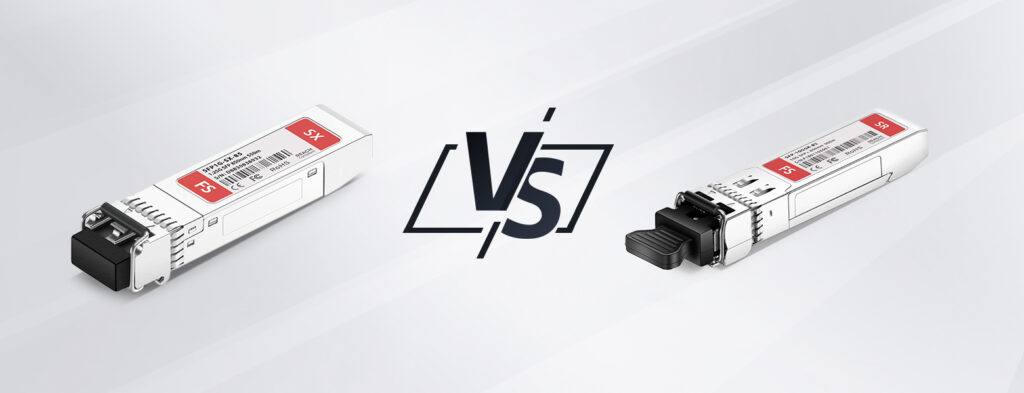The significance and usage of 10G SFP+ modules in modern networking cannot be understated. Their paramount role in multi-rate high-speed data transmissions has solidified their status as a crucial component in the telecommunications and data communication industries. This guide is an all-encompassing look at 10G SFP+ modules designed to help you understand their features, types, and assist in determining the best fit for your specific networking requirements.
Introduction to 10G SFP+ Features
The 10G SFP+ is a miniaturised photoelectric conversion module specifically designed to support high-speed network communication standards such as 10 Gigabit Ethernet (10GbE).
Speed and Performance
The 10G SFP+ module primarily stands for Small Form-factor Pluggable Plus, which operates at the data rate of 10 Gbps, making it substantially faster than its predecessor, the 1G SFP. It is particularly favoured for its outstanding performance in terms of high-speed data transmission, making it suitable for high-bandwidth applications.
Size and Power Consumption
One of the alluring features of the 10G SFP+ module is its compact size. Despite being an evolution from the standard SFP modules, it maintains an identical form factor which allows for greater port density in network devices. Moreover, these modules are recognised for their lower power consumption, which translates to cost savings and a reduced thermal footprint in data centres.
10G SFP+ Type Analysis
The different types of 10G SFP+ modules can be classified into four main categories, which can be classified according to the transmission medium (fibre optic or copper cable) used and the transmission distance. The following is a simplified classification.
- Multimode fibre (MMF) transmission
Short Range (SR): Transmission distance is usually limited to within the data centre or between adjacent buildings (approximately 300m to 400m).Long Reach Multimode (LRM): Suitable for slightly longer transmission distances, but not enough to use single-mode fibre (about 220m).
- Single-mode fibre (SMF) transmission
Medium/Long Range (LR): Can support transmission up to 10km, commonly used for inter-data centre or cross-campus connections.Long/Extended Range (ER): Usually used for long-distance transmission of 40km, such as long-distance network connection.Long Range (ZR): Supports transmission distances of over 80km, suitable for metropolitan area networks or carrier networks.
- Single fibre bidirectional (BIDI) transmission
Different distances: By using a single fibre to send and receive signals simultaneously, the number of required fibre infrastructure can be reduced. Distance options include 10km, 20km, 40km, etc.
- Copper cable transmission
Direct Attach Copper (DAC): Very short connections, such as within racks or between adjacent racks (usually within 10m).Twisted pair copper (10GBASE-T): It can be transmitted over distances of up to 100 metres using standard Cat 6a or Cat7 copper, similar to traditional Ethernet connections.

10G SFP+ Application Scenarios
In many existing infrastructures, 10G SFP+ remains a prevalent and efficient high-speed connection solution. When planning upgrades or expansions, it’s essential to consider not only the requirements of the current network but also evaluate the expected future data growth to ensure that the network can adapt to the ensuing challenges.
Application in Data Centre
The connection between the server and the switch: 10G SFP+ is primarily used to link the server to the Top-of-Rack (ToR) switch, creating a high-speed access layer network to provide ample bandwidth for data transmission between servers or between servers and storage devices.Storage network (SAN/NAS): For storage area networks requiring high throughput, 10G SFP+ can offer the necessary speed to ensure rapid data movement between storage devices and support I/O-intensive applications.Stacking between switches: To enhance network flexibility and scalability, 10G SFP+ modules can be utilised to establish connections between the core switch and the aggregation switch or access layer switch in the data centre, forming a virtual switch stack.
Application for Enterprise Networks
Core Network: In an enterprise-level network environment, the core layer typically requires higher bandwidth to manage the data flow of the entire network. 10G SFP+ is commonly used for high-speed core switch connections.Aggregation layer and access layer: To support higher-density workstation connections and facilitate bandwidth-intensive applications (such as large video conferencing systems), 10G SFP+ switches at the aggregation layer can offer higher-speed connections as uplinks.Distributed network environment: Enterprises often have multiple work areas or buildings. 10G SFP+ is employed to connect switches in different locations to ensure high-speed network access in each area.
10G SFP+ Selection Guide

Network requirements
Before opting for a 10G SFP+ module, a thorough assessment of your network requirements is essential. Understanding the data rate expectations, network architecture, and performance criteria will guide you in making an informed decision.
Distance and Medium
The distance over which the data will need to travel significantly impacts the type of SFP+ module needed. An MMF module may suffice for shorter distances within a data centre, but for longer inter-building links, an SMF module may be necessary. The choice between single-mode and multimode fibres must also align with the existing infrastructure.
Compatibility and Cost
Compatibility with existing hardware is a critical factor when selecting a 10G SFP+ module. Ensure that your networking equipment supports the module and that firmware versions are coherent. Additionally, cost considerations should align with your budget without compromising on the required performance and reliability standards.
Summary
In conclusion, selecting the right 10G SFP+ module requires a thorough assessment of network specifications, performance requirements, and operational conditions. By adopting a strategic approach and following this guide, network administrators can choose modules that meet their current demands while also accommodating future network growth and technology advancements. Visit FS.com for more details on 10G SFP+ modules.
Related Articles:
How to Select the Optimal SFP-10G-SR Module for Diverse Networking Environments







